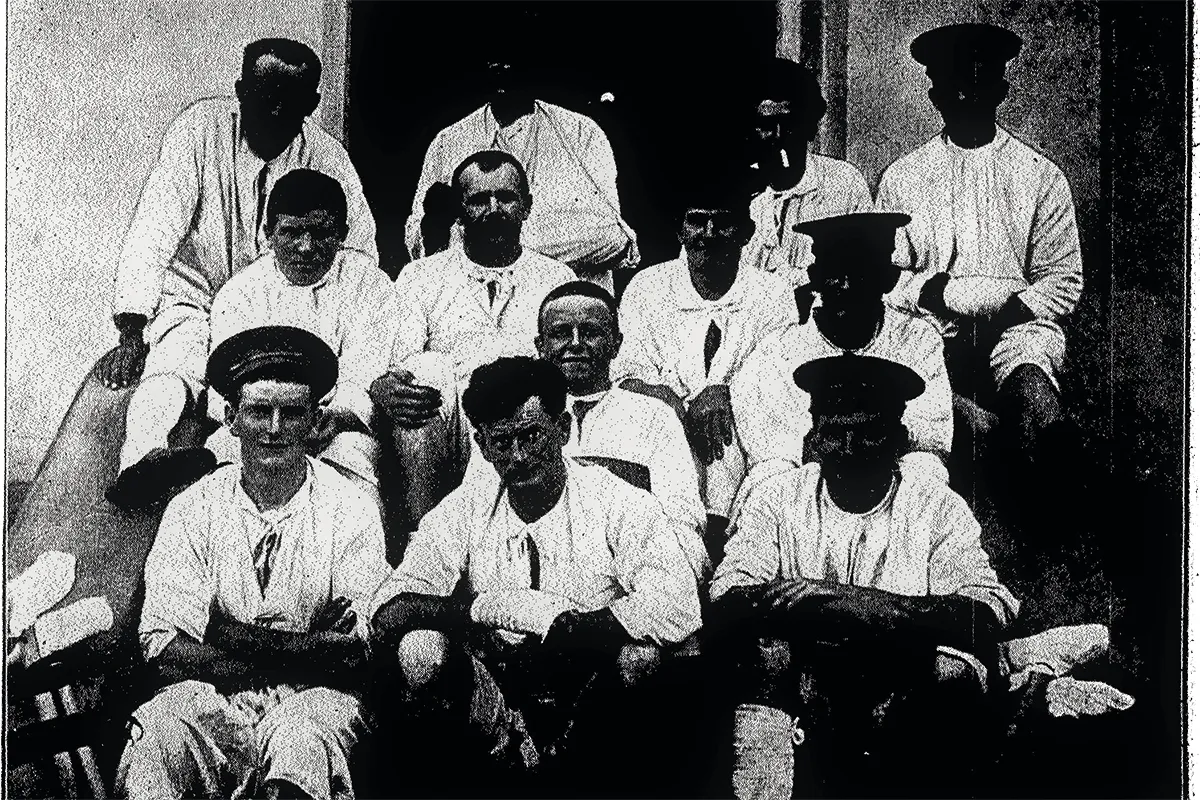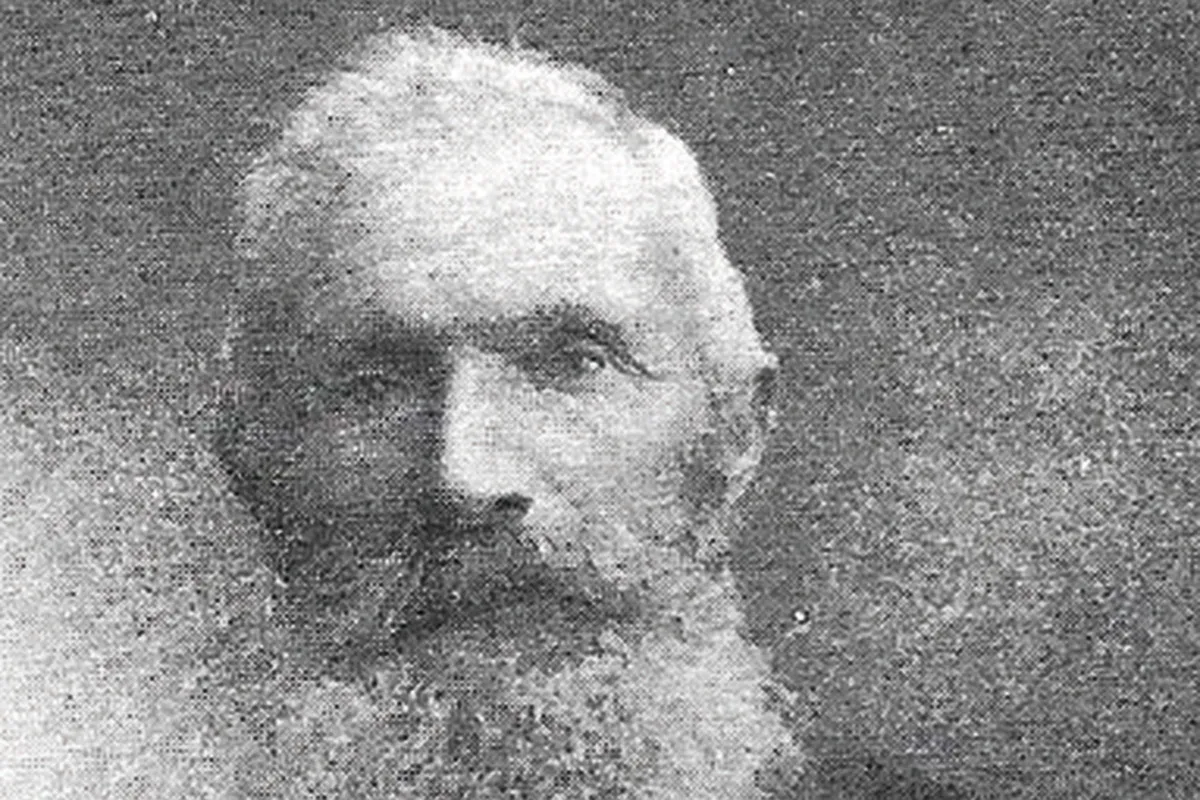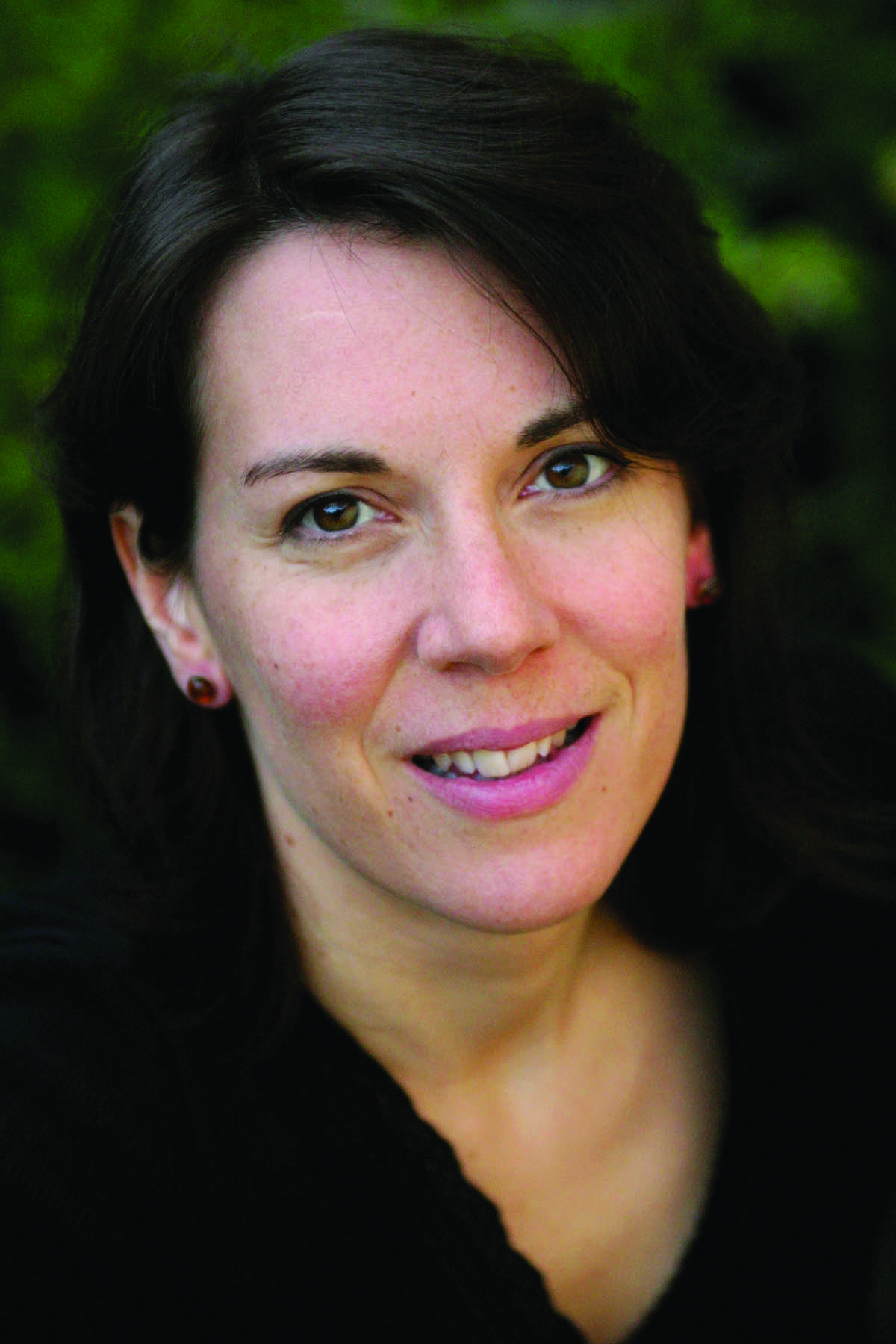A bleak windswept churchyard overlooking a blustery coastline on a small Scottish island contains a lichen-spotted headstone erected by a son in loving memory of his mother. A century and a half later, England-based New Zealander and direct descendant Bo Harris (née Law) came to this remote spot, ran her fingers over the headstone’s lettering and watched the waves crash on the shore below on her journey to reclaim her ancestors. Along the way, she found heroes, pioneers and a victim of a modern-day plague – and even took to the sea herself.
Bo first came to England in 1979. To gain a work permit, she had to prove that she had UK ancestors. Her research triggered an enduring love of family history and uncovered forebears who lived through key moments in New Zealand’s history.
Among them is James Harcus, one of her great great uncles, who worked on New Zealand’s railways. When the First World War broke out, he enlisted in the Otago Infantry Regiment aged 28. “He was part of the New Zealand Expeditionary Force (NZEF) and the Australian and New Zealand Army Corps (ANZAC),” says Bo. James departed from Port Chalmers, Dunedin, on the RMS Ruapehu as part of the NZEF Main Body and 1st Reinforcements. “The units disembarked in Egypt along with Australian Imperial forces to finish training and help defend the Suez Canal,” explains Bo on her website.

On 25 April 1915, James was among the ANZAC troops who landed near Ari Burnu, now known as Anzac Cove, on the Gallipoli peninsula in Turkey. “The NZEF were thrown immediately into the firing line when they waded ashore, as the enemy were already in the ravines and gullies above. Once above the beach, with shrapnel flying around them, they dug trenches to desperately defend their position.” The dead and dying lay all around.
James survived Gallipoli, but was wounded on 3 May 1915, probably during the Battle for Baby 700 (a key hill). He returned on the hospital ship Willochra, and was eventually discharged: “He was one of the lucky ones. So many of them never came back.”
His brother Robert also saw military service, but his was a completely different tale.
A rabbiter by trade living in Macraes, Robert volunteered at 27 and became a trooper in the New Zealand Mounted Rifles (NZMR). He fought in the Second Boer War (1889–1902).
Robert sailed to Durban on the troopship the Kent, which left Port Chalmers on 12 March 1902. The journey took 31 days. “Many men were seasick, and the 570 horses on board suffered badly when the ship rolled in mountainous seas,” says Bo.
The war ended a few months later, and in July 1902 Robert returned to civilian life unscathed – or so his family thought.
By 1909, it was clear that something was very wrong. “His father [also Robert] had to call in the police because of his son’s violent behaviour,” says Bo. “They arrested him on the grounds of insanity and he was committed to Seacliff, New Zealand’s largest mental asylum just outside Dunedin, where he died a terrible death in 1912. At his father’s request, he was buried with other members of his family in the Macraes cemetery.”
Robert’s medical notes suggest that “General Paralysis of the Insane” – tertiary syphilis – was the cause. At the time, New Zealand was suffering the spread of the ‘Black Plague’: sexually transmitted diseases, particularly syphilis. Bo discovered that soldiers and sailors were often infected overseas, then spread the diseases when they returned home. Robert had probably been infected while he was in the army.
It is Bo’s great great grandfather Robert Harcus, James and Robert junior’s father, who led her on her biggest journeys of discovery.
“Just before my mum died, she showed me Helen M Thompson’s book East of the Rock and Pillar: a History of the Strath Taieri and Macraes Districts (1949), which mentioned Robert.” Bo was excited to learn that he came from Eday in Orkney. Her mum also remembered that he had a long beard, and rode a white horse: “I think he was quite a character.”

Bo began to flesh out her great great grandfather’s story using records held by Archives New Zealand, Orkney Family History Society and ScotlandsPeople. “Also, the wonderful Toitū Otago Settlers Museum in Dunedin had passenger lists and arrival information.” She adds that the Hocken Collection at the University of Otago had information about the ship they travelled on, the Nelson.
Robert’s family left Orkney on 1 October 1874, when he was about 34. “He had four children by that stage – one, just a baby of five months. They had five more when they got to New Zealand.” The Nelson sailed from Greenock, Glasgow, and arrived at Port Chalmers, Otago, on 31 December 1874.
Bo was amazed to find the captain’s report of the journey in the New Zealand old newspaper archive at Papers Past. “Captain Anderson detailed the route of the ship and its arrival. He also noted that four young children died on that voyage, and two babies were born.”
The Harcuses went to New Zealand on an assisted-travel scheme run by the Otago Home Agency, which recruited immigrants as pioneers. “The idea was to get immigrants and families settled on the land. Some lived in tents in the Bush until they could afford to pay for a deposit on a 40-acre farm purchased
from the government.”
Robert and his family finally settled in Moonlight, Macraes Flat, Otago. But what made him leave Orkney in the first place?
“Robert fished for herring in season – it was tough work, and very dangerous. I think larger fishing companies were coming in and taking more of the fish.”
Robert might also have heard about the gold rush in Otago a decade earlier. In Macraes, there was still a huge amount of gold mining. “He dabbled with prospecting with his sons Robert, William and John. The newspapers show they applied for leases – and found some gold.”
However, it was another perilous occupation. John died in 1903, and a local newspaper reported: “An inquest heard that John was killed at the Golden Bar mine at Stoneburn, Macraes. Mr Cunningham found the deceased lying dead, his body fearfully mangled. It was thought he went for a plug of dynamite and was doing something to it when it went off, exploding the other plugs in the magazine.”
Robert senior eventually hung up his pickaxe and became a tree farmer. “Many pine trees in Macraes today came from his nursery,” says Bo.
Robert was laid to rest in Macraes’ southern cemetery in 1918, joining his wife, who died of consumption in 1900, and three of their sons.
Bo’s research also sparked an interest in the sea routes that New Zealand immigrants took and the boats they sailed on, and recently she embarked on a journey to the infamous Cape Horn. “I sailed on the Stella Australis, a small purpose-built ship specially designed to go to places like Patagonia and Cape Horn. It
was incredible.”
She sailed from Ushuaia in Argentina to Punta Arenas, Chile. During the trip, Bo visited a giant monument on Cape Horn depicting an albatross created in memory of the 10,000 seafarers who perished attempting to round the Cape. “It was an emotional experience,” says Bo. “It really makes you stop and think.”
But Bo also needed to see where Robert and his family had come from, and visited the Orkney Isles. “Orkney was fascinating. I could really feel the history because there are remains of Neolithic sites, such as Skara Brae. Seeing Eday for the first time was surreal. It felt isolated, at the mercy of the sea and weather. It’s such a tiny island, but it has the tallest single standing stone in Orkney.”
The Orkney Family History Society in Kirkwall pointed her in the right direction. “The census gave Robert’s last address there as Parkhead in West Side, Eday, so I knew roughly where it was. There was a little harbour near there to keep his fishing boat in.”
Bo’s journey had brought her family story full circle. Here, in this isolated spot, she came across the headstone erected by Robert “in loving memory” of his mother Jane Reid, who died on 8 March 1868 – giving Bo a tangible link to her forebear’s home.
“It was very touching,” Bo says. “Jane died the same year Robert got married. “I get the feeling he was incredibly close to her – he made sure that there was a headstone on her grave.”
Do you have a family story to share with Who Do You Think You Are? Magazine? Email wdytyaeditorial@ourmedia.co.uk for your chance to appear in the magazine!
